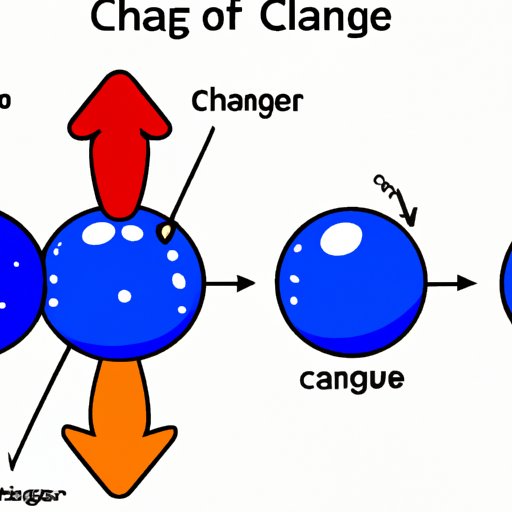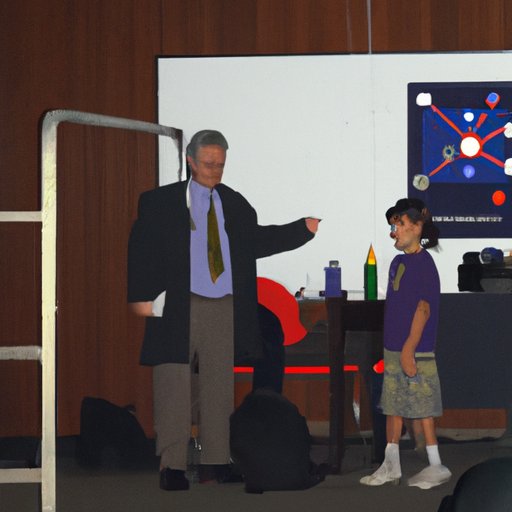
Introduction
Chemical and physical changes are two common types of processes that happen around us every day. They can be observed in various forms, from the rusting of iron to the melting of ice. Despite their prevalence, many people find it challenging to differentiate between chemical and physical changes. In this beginner’s guide, we will explore the fundamentals of chemical and physical changes, demystify the science behind them, and provide a step-by-step guide on how to recognize and differentiate between the two.
Chemical versus Physical Changes: Understanding the Fundamentals
Before we delve into the differences between chemical and physical changes, let’s define what each one means. A physical change refers to a change in the state, shape, or appearance of matter, without altering its chemical composition. In contrast, a chemical change occurs when there’s a rearrangement of atoms and molecules in a substance, leading to the formation of new chemical compounds.
In essence, a physical change does not create new substances, but a chemical change results in a complete transformation into a different substance.
Key differences between the two include:
- Physical changes are usually reversible, while chemical changes are generally irreversible
- Physical changes do not create new substances, while chemical changes do
- Physical changes do not involve any chemical reactions, while chemical changes involve chemical reactions
Examples of physical changes include boiling water, melting ice, crushing a can, and tearing paper. Examples of chemical changes include burning wood, rusting of iron, cooking an egg, and digesting food.

Demystifying the Science Behind Chemical and Physical Changes
The underlying science behind chemical and physical changes lies in the behavior of atoms and molecules. Matter is made up of different types of atoms that combine to form molecules. During a chemical change, the atoms in a substance rearrange to form new molecules, resulting in a fundamentally different substance.
In contrast, a physical change does not alter the chemical composition of a substance, but instead, changes its physical properties. For instance, when water boils, it changes from a liquid to a gas but retains its chemical composition of H2O molecules.
Another critical concept to understand when talking about chemical and physical changes is energy. During a chemical change, energy is either released or absorbed. For example, when wood burns, it undergoes a chemical reaction that releases heat and light energy. In contrast, during a physical change, energy is usually absorbed or released as heat, such as when ice melts into water and absorbs heat energy from the surroundings.
The Ultimate Guide to Recognizing the Difference between Chemical and Physical Changes
Here is a step-by-step guide to help you recognize and differentiate between chemical and physical changes:
- Observe the change happening in the substance
- Determine whether the substance changes its appearance, composition, or both
- If the substance only changes its appearance or physical properties, it’s a physical change
- If the substance changes its composition and creates new substances, it’s a chemical change
- Look for signs of a chemical reaction, such as the release of gas, the formation of a precipitate, or a change in temperature
Examples of common physical changes include melting, freezing, boiling, condensation, and sublimation. Examples of common chemical changes include combustion, corrosion, fermentation, and digestion. It’s important to note that some changes may have aspects of both physical and chemical changes, and it’s essential to observe the substance’s behavior closely to make the correct determination.
Exploring the Boundaries between Chemical and Physical Changes
While chemical and physical changes are often distinct, some cases can be classified as borderline. For instance, a solution in which a substance dissolves in water can be classified as a physical change. However, it’s also possible to observe chemical changes in this process.
Another example of a borderline case is the process of a fruit ripening. Some chemical reactions happen during the process, leading to a change in color and flavor. However, these changes are usually not significant enough to create an entirely new substance, so it’s classified as a physical change.
Chemical or Physical Change: How to Tell the Difference
To differentiate between physical and chemical changes, it’s critical to understand the fundamental differences between them. Here are some tips to help you tell the difference:
- Observe the substance carefully and look for signs of a chemical reaction
- Remember that chemical changes create new substances, while physical changes change the physical properties of the substance
- If you’re unsure, try looking up the substance’s chemical properties to determine whether it undergoes chemical changes in specific situations
You can also practice your knowledge by examining various substances and attempting to classify them as either chemical or physical changes. This will help you improve your observation skills and better understand the differences between the two types of changes.
Unlocking the Secrets of Chemical and Physical Changes: A Basic Guide for Beginners
In conclusion, understanding the difference between chemical and physical changes can help you make sense of the world around you. By recognizing the key differences and observing the substance’s behavior, you can classify the changes accurately and understand the underlying science behind the processes.
If you’re a beginner, start by familiarizing yourself with the fundamental definitions and concepts of physical and chemical changes. Pay attention to the different examples and how they behave, and practice your observation skills to hone your ability to differentiate between the two.




